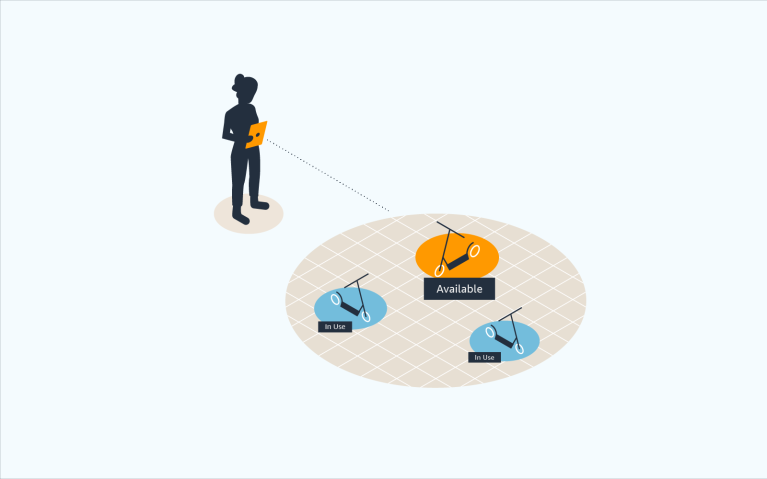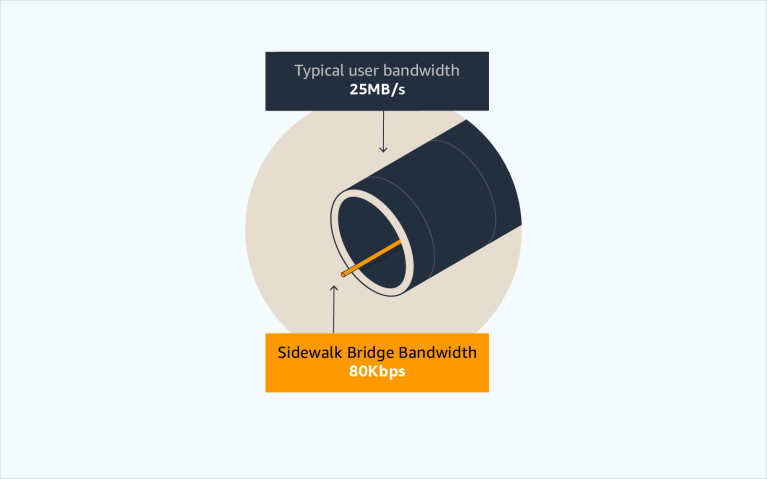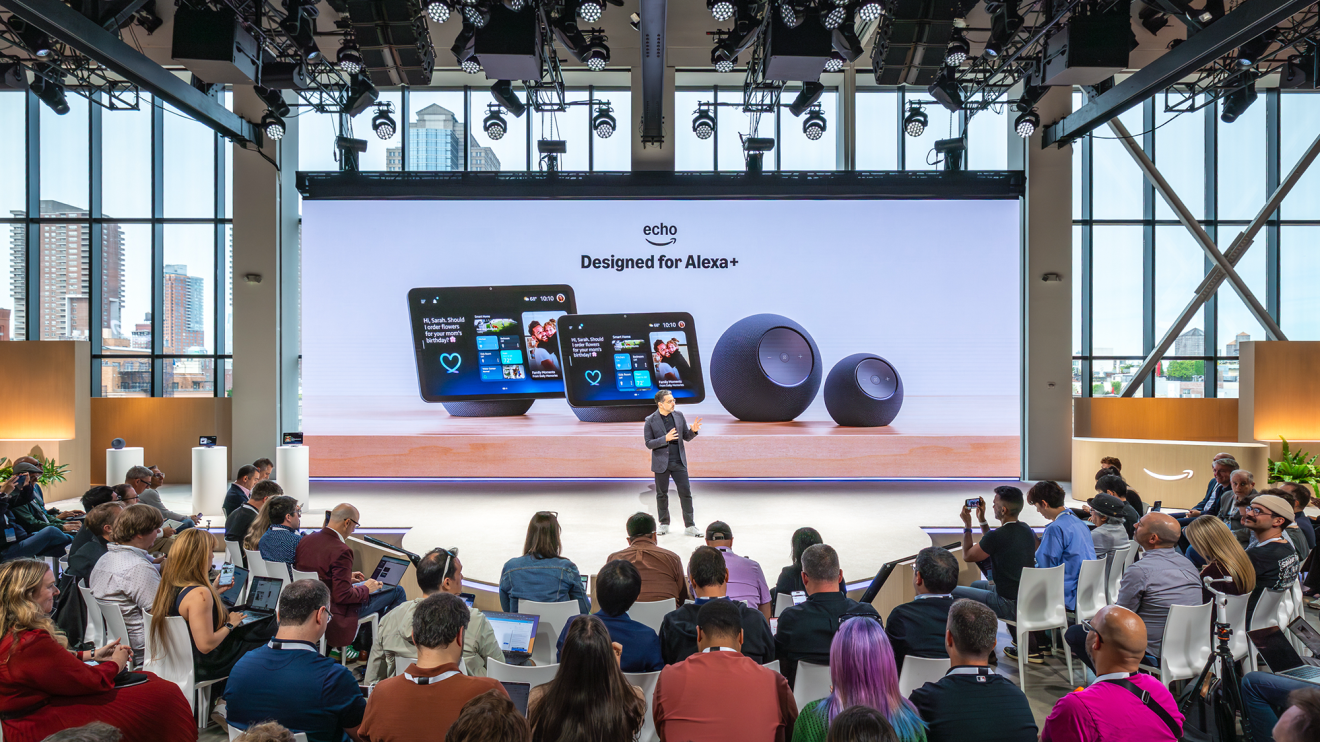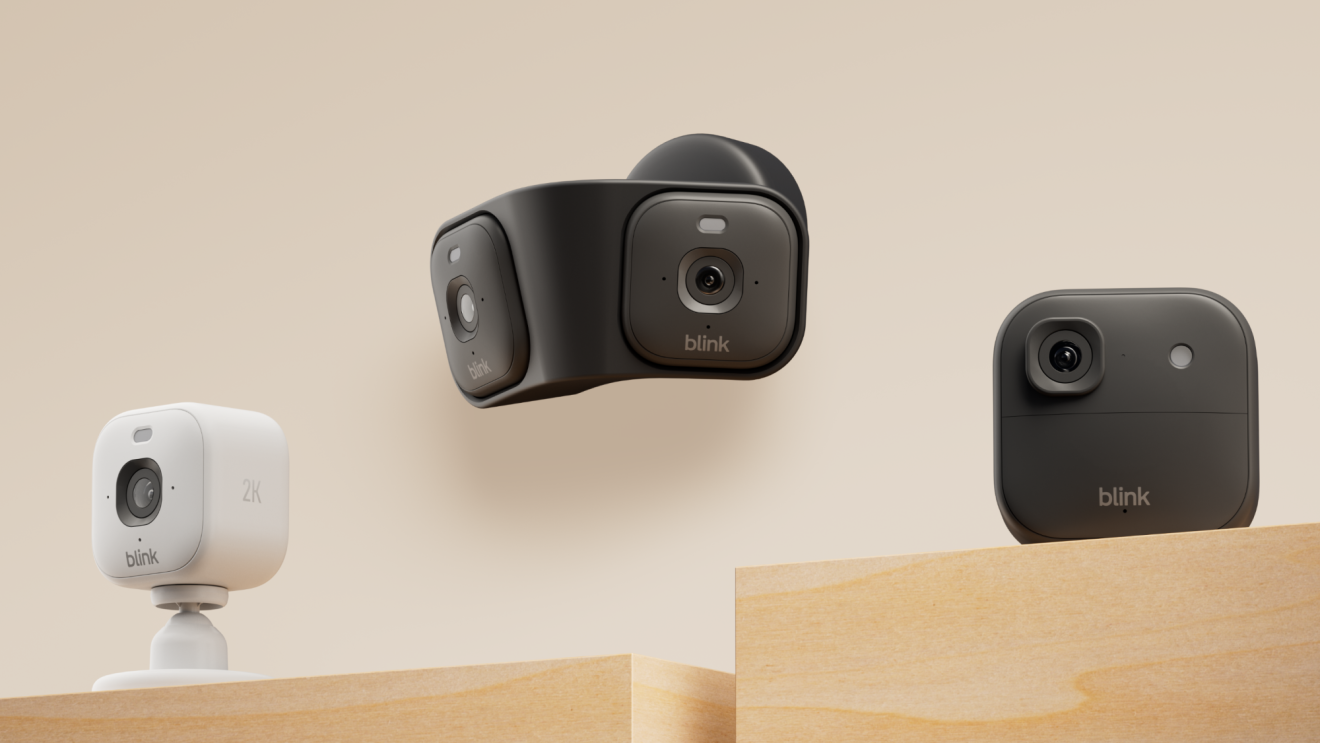Page overview
How does Amazon Sidewalk work?
Amazon Sidewalk is a low-bandwidth, low-power network. Participating Amazon devices, called Sidewalk Bridges, use a small portion of their internet bandwidth to create the Sidewalk network. Sidewalk-enabled devices like compatible cameras, smart locks, motion sensors, and wildfire detectors can send encrypted data over the network to a Sidewalk Bridge up to a half mile away. Using an internet connection, the Sidewalk Bridge can then securely send that data to the cloud. This allows customers with Sidewalk-enabled devices to receive water leak alerts, see air quality readings, or receive camera motion alerts on their mobile devices.
 Sidewalk-enabled devices can send encrypted data over the network to a Sidewalk Bridge up to a half mile away.
Sidewalk-enabled devices can send encrypted data over the network to a Sidewalk Bridge up to a half mile away.Customers can access Sidewalk using two types of devices: Sidewalk Bridges and Sidewalk-enabled devices. Sidewalk Bridges are devices that provide connections to the Sidewalk network. Customers with a Sidewalk Bridge can contribute a small portion of their internet bandwidth, which is pooled together to create a shared network. Sidewalk-enabled devices, on the other hand, connect to Sidewalk Bridges to access that network. Sidewalk-enabled devices include compatible cameras, smart locks, motion sensors, wildfire detectors, and more.
Wi-Fi and cellular networks are designed for high-bandwidth activities, such as video calling, web browsing, and video streaming. Wi-Fi works over short distances, so it can fail to reach even the far corners of your own home. Cellular networks, such as those offering a 5th generation mobile network (5G), carry data greater distances, but they are complex and can be expensive. Both Wi-Fi and cellular networks use high-frequency waves and consume a lot of power. Sidewalk, on the other hand, is a low-power and low-bandwidth network that uses lower frequencies to reliably and securely transmit small amounts of data up to a kilometer or half mile away. That’s why your devices won’t lose connectivity in areas where there is Sidewalk coverage.
If you live in the U.S., the answer is likely yes. Over 90% of people in the U.S live in an area with Sidewalk coverage. As more Sidewalk Bridges are connected, the strength and breadth of the shared network is growing. What’s more, there is no need to purchase any additional hardware. Any Sidewalk-enabled device you own will work if it is within range of a Sidewalk Bridge in your community.
 Over 90% of people in the U.S live in an area with Sidewalk coverage.
Over 90% of people in the U.S live in an area with Sidewalk coverage.Sidewalk also has multiple layers of encryption, security keys, and a range of other protective measures, so you can connect Sidewalk-enabled devices without creating passwords or downloading apps, and there is no setup required.
Very little. Sidewalk’s connectivity is distinct from your home Wi-Fi. If you choose, however, to enable Sidewalk on your eligible Bridge devices, those devices would use a small amount of internet bandwidth. But even the maximum bandwidth used at once by a Sidewalk Bridge is equivalent to just one-fortieth of the bandwidth used to stream a high-definition video clip. The total monthly data used by Sidewalk is capped at 500MB per account per month, equivalent to about 10 minutes of streaming video.
 The total monthly data used by Sidewalk is capped at 500MB per account per month, equivalent to about 10 minutes of streaming video.
The total monthly data used by Sidewalk is capped at 500MB per account per month, equivalent to about 10 minutes of streaming video.If you don’t have any Sidewalk Bridge devices, you can still connect Sidewalk-enabled devices to the network if you have coverage in your area.
By removing any setup hassle and extending the range of connected devices beyond the range of your Wi-Fi signal, Sidewalk expands the utility of devices connected to the network.
For example, Sidewalk-enabled smart lights will work even from the edges of your property. Another example, Level, a company that makes smart locks, uses Sidewalk to let you control your smart locks in the Ring and Level apps without requiring you to be within Bluetooth range of your mobile device.
Sidewalk also makes devices that were previously too expensive or energy-intensive to use widely—like remote leak detectors, motion sensors, or shipment trackers—increasingly feasible, giving customers more ways to add intelligence to their homes, schools, and businesses.
Sidewalk can benefit your community as well. Sidewalk-enabled wildfire sensors and solar energy measurement units could help officials optimize energy grids and respond more quickly to wildfires in the near future.
 We employ numerous protective measures, including security keys and multiple layers of encryption to secure data traveling on Sidewalk.
We employ numerous protective measures, including security keys and multiple layers of encryption to secure data traveling on Sidewalk.No. Privacy and security are foundational to Sidewalk. Sidewalk cannot see the content of the messages or other content traveling on the Bridge owner's home network. We employ numerous protective measures, including security keys and multiple layers of encryption to secure data traveling on Sidewalk. You can think of Sidewalk as a mail carrier, transporting your data securely and rapidly to wherever it needs to go, but never opening it along the way.
You can easily turn Sidewalk on or off any time in the Alexa app’s account settings or the Ring app’s Control Center.









